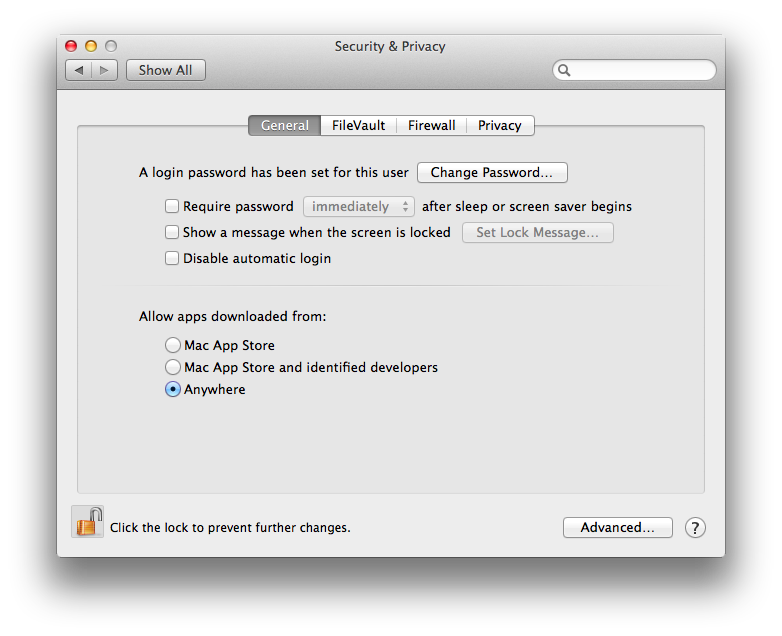Beast's Domain Mac OS
Beast's Domain Mac OS
Apple Open Directory is the LDAPdirectory service model implementation from Apple Inc. A directory service is software which stores and organizes information about a computer network's users and network resources and which allows network administrators to manage users' access to the resources.
- Beast's Domain Mac Os 11
- Beast's Domain Mac Os Download
- Beast's Domain Mac Os X
- Beast's Domain Mac Os Catalina
In the context of macOS Server, Open Directory describes a shared LDAPv3 directory domain and a corresponding authentication model composed of Apple Password Server and Kerberos 5 tied together using a modular Directory Services system. Apple Open Directory is a fork of OpenLDAP.
DNS servers are used to convert the domain names into IP addresses which can be processed by the computer systems. What is DNS Cache? DNS cache is a temporary storage of the information about previous DNS lookups by a computer’s operating system. By keeping this local copy of DNS will allow your browser/OS to load the website faster.
The term Open Directory can also be used to describe the entire directory services framework used by macOS and macOS Server. In this context, it describes the role of a macOS or macOS Server system when it is connected to an existing directory domain, in which context it is sometimes referred to as Directory Services.
Apple, Inc. also publishes an API called the OpenDirectory framework, permitting macOS applications to interrogate and edit the Open Directory data.[1]
This is the instanced zone involving the second Beasts' Domain group mission in which you're sent to dethrone the current King of the Beasts. Comments Connected Zones (1). Script to enable SSH, rename computer, and join AD Domain on Mac (Mountain Lion) Here is a script we are using as a post-installation task to enable SSH, set the computer name, and then join the computer to our Active Directory managed domain. Unbind from a server in Directory Utility on Mac. Click Unbind, authenticate as a user who has rights to terminate a connection to the Active Directory domain, then click OK. If you see an alert saying the credentials weren’t accepted or the computer can’t contact Active Directory, click Force Unbind to forcibly break the connection.
Beast's Domain Mac Os 11

With the release of Mac OS X Leopard (10.5), Apple chose to move away from using the NetInfo directory service (originally found in NeXTSTEP and OpenStep), which had been used by default for all local accounts and groups in every release of Mac OS X from 10.0 to 10.4. Mac OS X 10.5 now uses Directory Services and its plugins for all directory information. Local accounts are now registered in the Local Plugin, which uses XML property list (plist) files stored in /var/db/dslocal/nodes/Default/ as its backing storage.[2]
Implementation in macOS Server[edit]
macOS Server can host an Open Directory domain when configured as an Open Directory Master. In addition to its local directory, this OpenLDAP-based LDAPv3 domain is designed to store centralized management data, user, group, and computer accounts, which other systems can access. The directory domain is paired with the Open Directory Password Server and, optionally, a Kerberos realm. Either provides an authentication model and stores password information outside of the directory domain itself.[3]
Beast's Domain Mac Os Download
For Kerberos authentication, the Kerberos realm can either be hosted by a Kerberos key distribution center (KDC) running on the server system, or the server can participate in an existing Kerberos realm.
For services that are not Kerberized, the Password Server provides the following Simple Authentication and Security Layer-based authentication methods:[4]
- NTLM v1 and v2
Any Mac OS X Server system prior to 10.7 (Lion) configured as an Active Directory Master can act as a Windows Primary Domain Controller (PDC), providing domain authentication services to Microsoft Windows clients.[5]

Directory services framework[edit]
In a more general sense, Open Directory can describe the plugins model used by Directory Utility and the directory services framework in macOS and macOS Server. This could be thought of as analogous to the Name Service Switch systems of some other Unix-likeoperating systems. When connected to a directory system, a macOS client or Server can authenticate users, lookup contacts, perform service discovery and name resolution with the following types of directories:[6]
- Authentication and contacts
- Microsoft Active Directory
- LDAPv3, including an Open Directory domain or RFC 2307-compliant system
- Apple/NeXT NetInfo domains
- BSD flat files and NIS
- Service discovery and name resolution
- Windows (NetBIOS and WINS)
History[edit]
Open Directory began with Mac OS X Server 10.2. In this initial form, Open Directory consisted of a network-visible NetInfo directory domain and a corresponding Authentication Manager service for storing passwords outside of the directory. Version 10.2 also included support for Kerberos.[7] Mac OS X versions 10.1 and 10.0 stored user password information within the directory domain using crypt password authentication authorities, but version 10.2 paved the way for the current Shadow Hash and Password Server mechanisms.[8]
Password Server is the successor to Authentication Manager, and was introduced in Open Directory 2 in Mac OS X Server 10.3. Open Directory 2 was also the first version to use LDAPv3 as the directory domain.
Mac OS X Server 10.4 includes Open Directory 3, which introduced Active Directory domain member support, trusted directory binding, and increased robustness.[9]
Mac OS X Server 10.5 features Open Directory 4 with support for cross-domain authorization and a built-in RADIUS server for managing AirPort base stations.[10] Open Directory 4 no longer includes elements of NetInfo.[11]
See More[edit]
References[edit]
Beast's Domain Mac Os X
- ^'OpenDirectory Release Notes at developer.apple.com'. Retrieved 2010-04-21.CS1 maint: discouraged parameter (link)
- ^'Directory Services source code at www.opensource.apple.com'. Retrieved 2009-09-02.CS1 maint: discouraged parameter (link)
- ^'Mac OS X Server: Open Directory Administration, page 40'(PDF). Archived from the original(PDF) on 2007-03-15. Retrieved 2007-06-07.CS1 maint: discouraged parameter (link)
- ^'Mac OS X Server: Open Directory Administration, page 50'(PDF). Archived from the original(PDF) on 2007-03-15. Retrieved 2007-06-07.CS1 maint: discouraged parameter (link)
- ^'Server Admin 10.4 Help: Setting Up a Server as a Primary Domain Controller'. Retrieved 2007-06-07.CS1 maint: discouraged parameter (link)
- ^'Mac OS X Server: Open Directory Administration, chapter 7'(PDF). Archived from the original(PDF) on 2007-03-15. Retrieved 2007-06-07.CS1 maint: discouraged parameter (link)
- ^'Apple - Mac OS X Server 10.2: How to Integrate Services With Kerberos'. Archived from the original on 2008-02-18. Retrieved 2007-06-08.CS1 maint: discouraged parameter (link)
- ^'Mac OS X Server: Open Directory Administration, page 41'(PDF). Archived from the original(PDF) on 2007-03-15. Retrieved 2007-06-08.CS1 maint: discouraged parameter (link)
- ^'Apple - Mac OS X Server - Open Directory'. Retrieved 2007-06-08.CS1 maint: discouraged parameter (link)
- ^'Apple - Mac OS X Server - Technology - Open Directory'. Retrieved 2007-12-21.CS1 maint: discouraged parameter (link)
- ^'AFP548 - Leopard Server Part 2 - Local Directory Services'. Archived from the original on 2009-04-15. Retrieved 2007-12-21.CS1 maint: discouraged parameter (link)
Directory Utility User Guide
If a computer is using Directory Utility’s Active Directory connector to bind to an Active Directory server, you can unbind the computer from the Active Directory server.
You can forcibly unbind if the computer can’t contact the server or if the computer record is removed from the server.
Beast's Domain Mac Os Catalina
In the Directory Utility app on your Mac, click Services.
Click the lock icon.
Enter an administrator’s user name and password, then click Modify Configuration (or use Touch ID).
Select Active Directory, then click the “Edit settings for the selected service” button .
Click Unbind, authenticate as a user who has rights to terminate a connection to the Active Directory domain, then click OK.
If you see an alert saying the credentials weren’t accepted or the computer can’t contact Active Directory, click Force Unbind to forcibly break the connection.
If you forcibly unbind, Active Directory still contains a computer record for this computer. Let the Active Directory administrator know to remove the computer record.
Beast's Domain Mac OS
